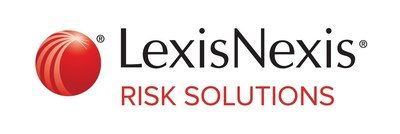LexisNexis U.S. Auto Insurance Trends Report Shows Signs of a Revolution in the Auto Insurance Industry
LexisNexis Risk Solutions released its 2022 U.S. Auto Insurance Trends Report, analyzing 2021 data to highlight ongoing challenges in the auto insurance industry. Key findings indicate continued volatility in auto insurance shopping and policy growth due to pandemic-related factors. Notable shifts in driving behavior have led to increased claims severity, despite a rebound in miles driven. The report emphasizes the need for insurers to leverage data and analytics for better risk assessment and customer experience as regulatory changes put pressure on traditional insurance practices.
- 71% of consumers show interest in telematics-enabled usage-based insurance for discounts.
- Miles driven rebounded to pre-pandemic seasonal patterns, providing improved data for loss cost frequency.
- Claims severity increased despite returning to normal driving patterns.
- Volatile auto insurance shopping and policy growth due to pandemic-related influences.
- Vehicle shortages and supply chain issues led to reduced car sales.
Insights
Analyzing...
Latest Annual Report Details Trends U.S. Auto Insurers are Facing in the Aftermath of Pandemic-Induced Supply Shortages, High Inflation Rates, New Driving Behaviors and More
ATLANTA, April 21, 2022 /PRNewswire/ -- LexisNexis® Risk Solutions today released its 2022 U.S. Auto Insurance Trends Report, which aggregates annual market data about driving behaviors, auto insurance shopping, underwriting and claims to help insurers better navigate a myriad of evolving trends impacting the U.S. auto insurance industry.
This year's report analyzes 2021 data, detailing how the industry continues to navigate the aftermath of pandemic-induced supply shortages, inflation, and new driving behaviors, and provides insights for insurance carriers to help improve their workflows with an eye on streamlining consumer experience. One of the big questions within the U.S. auto insurance industry heading into 2021 was whether it would see a rebound to more normal driving and shopping patterns, or if the industry is undergoing a revolution in the wake of the pandemic that would compel insurers to think about the policy lifecycle differently.
"The jury is still very much out on the long-term effects of these market trends impacting the auto insurance industry," said Adam Pichon vice president and general manager of Auto and Home Insurance at LexisNexis Risk Solutions. "While we have seen some traditional patterns reemerge with respect to miles driven and insurance shopping volumes, we saw another rollercoaster year due to volatile activity in claims severity, insurance switching, more serious traffic violations, and vehicle purchasing due to macroeconomic conditions. Add to that increasing consumer interest in telematics data and an active regulatory and legislative environment, and we are seeing more signs of a revolution in the industry than a rebound. Insurers who arm themselves with accurate and comprehensive data are poised to price and rate more accurately, handle claims more efficiently, and improve customer experience in the face of evolving market stressors."
Auto Insurance Trends Highlights Yet Another Turbulent Year
- Auto insurance shopping and new policy growth numbers were volatile for the second year in a row, shaped largely by continued pandemic-related influences.
- Changes in driving behavior – including riskier driving behaviors such as distracted driving – created a notable shift in the driving violation data mix reported. An abnormal rise in major speeding violations coincided with another yearly increase in traffic fatalities.
- Claims severity increased even as more normal driving patterns returned, particularly in the second half of the year. While severity of claims have increased, the number of "touches" required to close a claim has not improved with
29% of consumers reporting having to speak with three or more people to get their claim settled. - Vehicle shortages and supply chain issues led to reduced car sales and slowed the adoption of advanced driver assistance systems (ADAS) after gains in recent years. And with fewer cars available, vehicle purchases were suppressed, which meant auto insurance shopping was down – as vehicle purchases account for as many as one in three auto insurance shopping events.
- Miles driven, which is a strong predictor of loss cost frequency, rebounded to traditional seasonal patterns exhibited in 2019, and carriers could see a significant benefit in more accurate and frequent mileage readings from connected vehicles.
- According to a December 2021 LexisNexis Risk Solutions survey of U.S. consumers,
71% are interested in the of use telematics-enabled usage-based insurance (UBI) for purposes of discounts. However, consumer adoption remains much lower, presenting a significant opportunity for both consumers and insurers. - Regulatory environment changes are putting pressure on core rating variables as some states are introducing legislation designed to restrict the types of data used for risk-based insurance scoring. This could be harmful to consumers as
85% of new U.S. consumer auto insurance policies issued to consumers in 2021 benefited from products that leverage data and analytics.
"When you consider all the variables at play, I do think the assertion by LexisNexis Risk Solutions that we are in a revolution of sorts in the insurance industry is apt," said Karlyn Carnahan, head of insurance, North America at Celent. "Like no time I can ever recall, insurers are reliant on data and analytics to not only assess risk, but also to provide a more seamless experience for the customer from point of quote all the way through the claims process. Across the insurance continuum, data is oil that keeps the engine running."
Considerations for the Road Ahead
2022 could be headed for another year of vehicle and insurance shopping volatility in year-over-year growth rates. Additionally, current economic uncertainty and continued risky driving behaviors suggest claims severity will remain high. Finally, LexisNexis Risk Solutions will continue to watch the regulatory environment closely in support of consumers and carriers.
"The insurance industry is in a critical phase," continued Pichon. "There are so many unknowns, and insurers, no matter the size, who adapt by using data and analytics to enhance their workflows and meet customers where they are will be positioned to make better, more informed decisions and gain market share."
Download the latest Auto Insurance Trends Report.
About LexisNexis Risk Solutions
LexisNexis® Risk Solutions harnesses the power of data and advanced analytics to provide insights that help businesses and governmental entities reduce risk and improve decisions to benefit people around the globe. We provide data and technology solutions for a wide range of industries including insurance, financial services, healthcare and government. Headquartered in metro Atlanta, Georgia, we have offices throughout the world and are part of RELX (LSE: REL/NYSE: RELX), a global provider of information and analytics for professional and business customers. For more information, please visit www.risk.lexisnexis.com, and www.relx.com.
Media Contacts:
Chas Strong
LexisNexis Risk Solutions
Phone: +1.706.714.7083
Charles.Strong@lexisnexisrisk.com
Donna Armstrong
Brodeur Partners for LexisNexis Risk Solutions
Phone: +1.646.746.5611
mholman@brodeur.com
![]() View original content to download multimedia:https://www.prnewswire.com/news-releases/lexisnexis-us-auto-insurance-trends-report-shows-signs-of-a-revolution-in-the-auto-insurance-industry-301530357.html
View original content to download multimedia:https://www.prnewswire.com/news-releases/lexisnexis-us-auto-insurance-trends-report-shows-signs-of-a-revolution-in-the-auto-insurance-industry-301530357.html
SOURCE LexisNexis Risk Solutions








